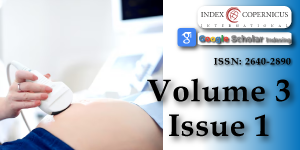Molecular profiles of hepatotoxicity and nephrotoxicity markers in dysmenorrheic (on treatment or not) students
Main Article Content
Abstract
Background: Dysmenorrhea is menstrual disorder that affects about 40% - 90% of women worldwide, it is associated with oxidative stress. The current treatment of this condition is administration of non-steroidal anti-inflammatory drugs, which when frequently used, may affect organs.
Objective: Assess the hepatotoxicity and nephrotoxicity side effects related to dysmenorrhea and its treatment
Materials and methods: A survey (questionnaire) was designed and implemented on 689 female students of the University of Dschang. After this, and following the inclusion criteria, 191 blood samples were collected for assay of hepatotoxicity markers (transaminases, albumin), nephrotoxicity indicators (creatinine, urea, total protein) and the inflammation associated indicators. The measurements were performed on fully automated Olympus AU 400 Analyzer, using standard reagent kits.
Results: Subjects with untreated dymenorrhea lasting more than five years had a significantly high level (p < 0.05) of ALT (39.47 ± 15.74 IU/L) and AST (44.37 ± 13.74 IU/L). Transaminases levels were significantly associate (p < 0.01) and positively correlate (0.251 for ALT and 0. 223 for AST) with the disease duration. Dysmenorrheic individuals on medication for more than 9 years had significantly higher ALT (25.14 ± 7.85 IU/L) and AST (35.26 ± 0.70 IU/L) levels (p < 0.05) compared to those under treatment for less than 5 years (19.37 ± 8.27 UI/L and 27.68 ± 8.56 UI/L). The use of analgesics, regardless of the duration of treatment, had normal creatinine clearance (107.44 ± 30.86 ml/min), compared to those treated with either anti-inflammatory drugs (71.56 ± 26.44 ml/min), or a combination of analgesics and anti-inflammatory drugs (81.34 ± 31.97 ml/min), which was significantly reduced (p < 0.05).
Conclusion: Dysmenorrhea duration, type and duration of treatment potentially expose participants to liver and kidney disorders.
Article Details
Copyright (c) 2020 Sylvie ON, et al.

This work is licensed under a Creative Commons Attribution 4.0 International License.
Stenchever MA. Primary and Secondary Dysmenorrhoea and Premenstrual Syndrome. In: Stenchever MA, Droegenmueller W, Herbst AL, Mishell DR. Editors. Comprehensive Gynecology. St. Louis: Mosby. 2001; 1065-1078.
Dawood MY. Primary Dysmenorrhea: Advances in Pathogenesis and Management. Obstet Gynecol. 2006; 108: 428-441. PubMed: https://www.ncbi.nlm.nih.gov/pubmed/16880317
Proctor M, Farquhar C. Diagnosis and management of dysmenorrhea .BMJ. 2006; 332: 1134-1138. PubMed: https://www.ncbi.nlm.nih.gov/pmc/articles/PMC1459624/
Iacovides S, Avidon I, Baker FC. What we know about primary dysmenorrhea today: critical review. Hum Reprod Update. 2015; 21: 762-778. PubMed: https://www.ncbi.nlm.nih.gov/pubmed/26346058
Harel Z. Dysmenorrhea in adolescents and young adults: etiology and management. J Pediatr Adolesc Gynecol. .2006; 19: 363-371. PubMed: https://www.ncbi.nlm.nih.gov/pubmed/17174824
Bettendorf B, Shay S, Tu F. Dysmenorrhea: contemporary pespertive. Obstet Gynecol Surv. 2008; 63: 597-603. PubMed: https://www.ncbi.nlm.nih.gov/pubmed/18713479
Marjoribanks J, Ayeleke RO, Farquhar C, Proctor M. Nonsteroidal anti-inflammatory drugs for. Dysmenorrhea. Cochrane Database syst rev. 2015; CD001751. PubMed: https://www.ncbi.nlm.nih.gov/pubmed/26224322
Lefebvre G, Pinsonneault O, Antao V, Black A, Burnett M, et al. Primary dysmenorrhea consensus guideline. J Obstet Gynaecol Can. 2005; 27: 1117-1146. PubMed: https://www.ncbi.nlm.nih.gov/pubmed/16524531
Dawood MY, Khan-Dawood FS. Clinical efficacy and differential inhibition of menstrual fluid prostaglandin F2 alpha in a randomized, double-blind, crossover treatment with placebo, acetaminophen, and ibuprofen in primary dysmenorrhea. Am J Obstet Gynecol. 2007; 196: 35 el-5. PubMed: https://www.ncbi.nlm.nih.gov/pubmed/17240224
Drevon CA. Marine oils and their effects. Nutri Rev. 1992; 50 (4,pt2): 38-45. PubMed: https://www.ncbi.nlm.nih.gov/pubmed/1608564
Smith WL, Langenbach R. Why there are two cyclooxygenase isozymes. J Clin Invest. 2001; 107: 1491-1495. PubMed: https://www.ncbi.nlm.nih.gov/pubmed/11413152
Larrey D. Hepatotoxicité des médicaments. Service d’Hépato-gastroentérologie et Transplantation. 2011; INSERM 1040-Institut de Recherche Biologique, Hôpital Saint Eloi, 80 avenue Fliche, 34295 Montpellier Cedex 5.
Dikenosoy E, Balat O, Pence S, Balat A, Cekmen M, et al. Malondialdehyde,nitric oxide and adrenomedulin level in patients with dysmenorrhea. J Obstet Gynaecol Res. 2008; 34: 1049-1153. PubMed: https://www.ncbi.nlm.nih.gov/pubmed/19012707
Uttara B, Singh AV, Zamboni P, Mahajan RT. Oxidative stress and neurodegenerative diseases: A review of upstream and down stream antioxidant therapeutic options. Curr Neuropharmacol. 2009; 7: 65-74. PubMed: https://www.ncbi.nlm.nih.gov/pmc/articles/PMC2724665/
Fromenty B. Mécanismes de l'hépato-toxicité médicamenteuse. Elsevier Masson, 2010; Mécanismes de l'hépatotoxicité médicamenteuse-Elsevier Masson consulte.htm [consulté le 14 Avril 2015].
Hilal G, Albert C, Vallée M. Mécanismes impliqués dans la néphrotoxicité. Ann Biol Clin (Quebec). 2005; 42: 29-35.
Giovanni G, Giovanni P. Do non-steroidal anti-inflamatory drugs and COX-2 selective inhibitors have different renal effet? J Nephrol. 2002; 15: 480-488. PubMed: https://www.ncbi.nlm.nih.gov/pubmed/12455713Curhan GC, Knight EL, Rosner B. Lifetime nonnarcotic analgesic use and decline in renal function in women. Arch of Inter Med. 2004; 164: 1519–1524. PubMed: https://www.ncbi.nlm.nih.gov/pubmed/15277282

